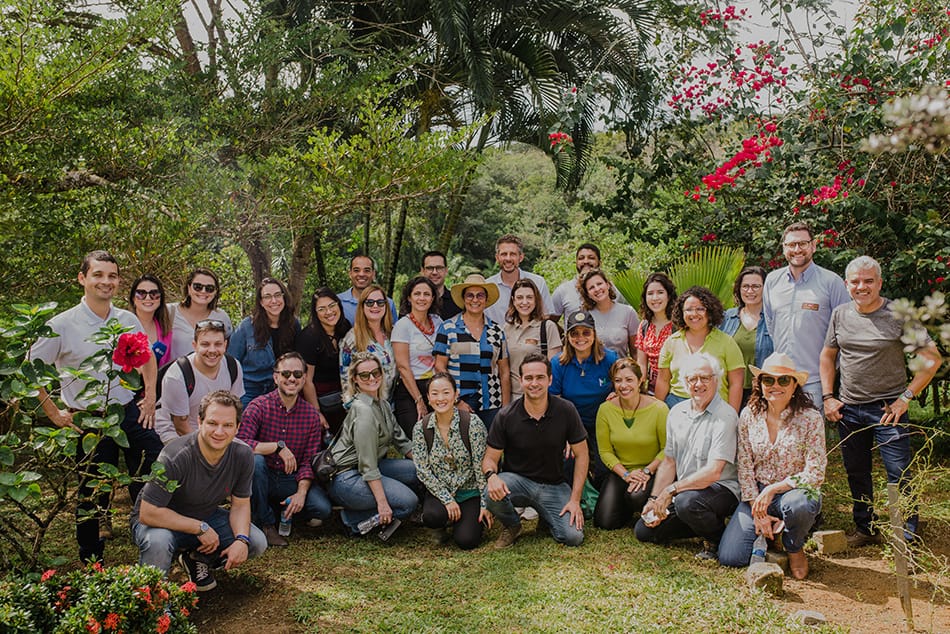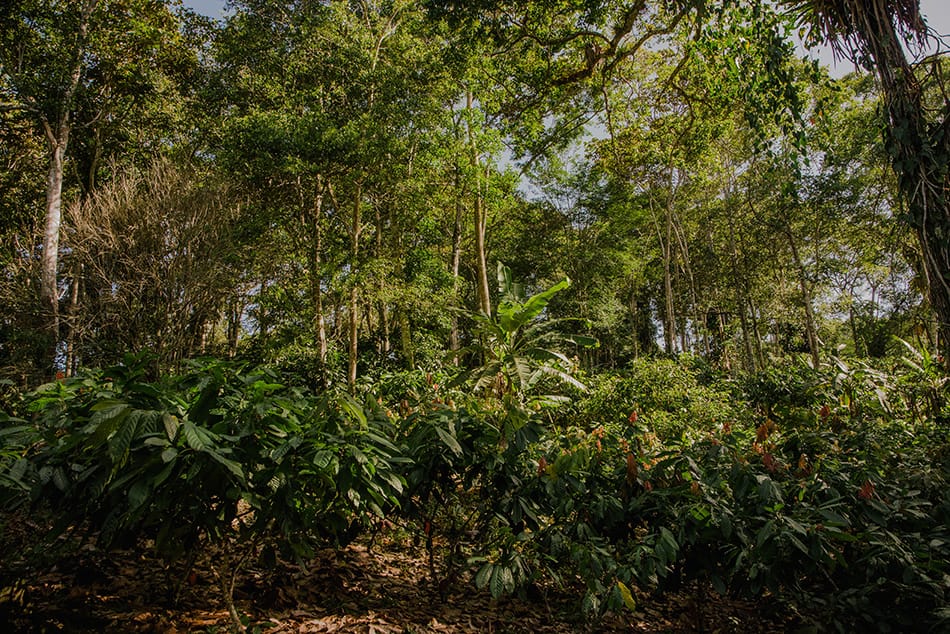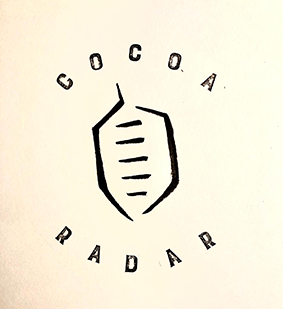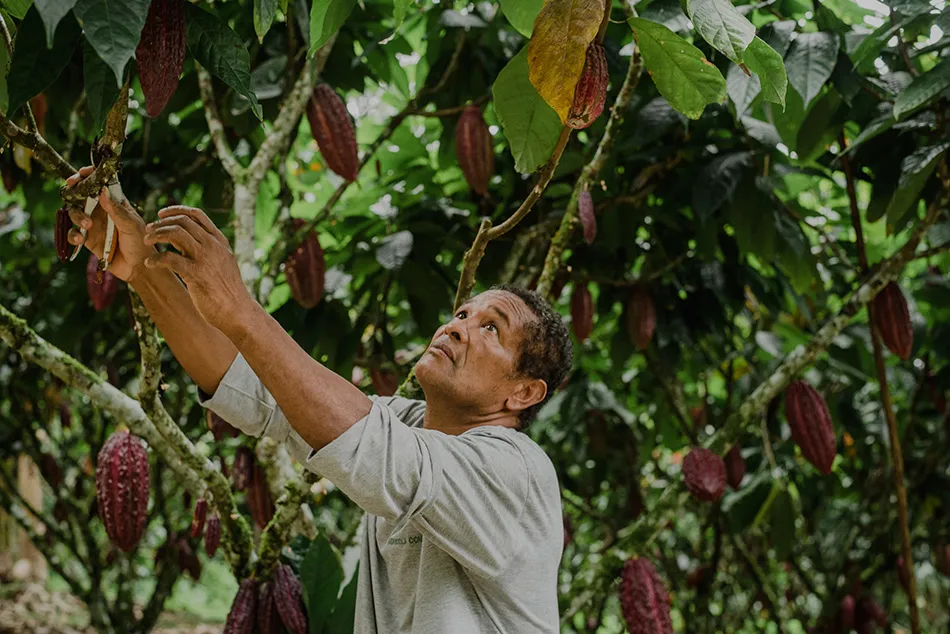As a pre-competitive, public-private initiative, the programme is active across Brazil’s cocoa-growing regions and promotes environmental preservation, restoration, and conservation.
CocoaAction Brasil was initially established for a five-year term from 2018 to 2022 but has been extended for another cycle, projected to continue until 2026-27. Its success has also encouraged the WCF to consider setting up similar schemes in other countries.
During a panel discussion at the recent Chocoa Conference, Peter Koegler, World Cocoa Foundation Vice President of Programmes, said the ground for collaboration, where its member companies come together for the good of productivity, is something that is evident in CocoaActionBrasil.
“This is a real example of why public-private partnerships work and help improve farmers' livelihoods. We have worked with eight member companies, including Mondelez, Nestle, and Mars, and focussed on farm productivity, professionalizing, and improving socio-economic resilience.”
With the WCF set to return to São Paulo in March 2025 for its next Partnership Meeting, we highlight some key achievements, which include over 24 projects with a total investment exceeding 150 million Brazilian reais (approximately $30.6 million).
These projects are designed to boost production, improve quality, and ensure cocoa farming sustainability in Brazil by enhancing the local cocoa supply chain.
Indirectly, small-scale cocoa farmers have seen a 240% increase in credit access, with funding rising from R$19.7 million in 2017 to R$67 million in 2021. This boost has enabled farmers to invest in better farming practices and technologies.

The cabruca method
CocoaAction Brasil has been pivotal in promoting agroforestry systems and biodiversity conservation. Vitor Stella, a technical consultant on the CocoaAction team, explains why the unique cabruca cocoa cultivation system, in particular, is crucial in preserving the Atlantic Forest.
“The cabruca system is the predominant cacao production model in southern Bahia, a region with a deep-rooted history in cacao cultivation spanning over 275 years. Cabruca is considered an agroforestry system in which cacao is grown under the shade of Atlantic Forest trees, playing a crucial role in preserving this biome.
“As cacao is native to tropical rainforest regions of the Americas, it thrives under the conditions provided by the Atlantic Forest canopy. This symbiotic relationship between cacao and the forest benefits both, fostering environmental sustainability. While the cabruca system itself cannot be directly adopted in other countries—since its definition is tied specifically to cacao cultivation within the Atlantic Forest biome—it has influenced and inspired many other agroforestry cacao systems in Brazil and worldwide.”
CocoaActionBrasil spokesperson Maria Fernanda Brando told this website she is pleased that the project has been extended until 2026-27. “We are very excited for the following years of CocoaAction Brasil and the Brazilian cocoa sector. We have been actively involved with the construction of the Inova Cacau 2030 Plan since its inception (in 2023) and the mobilization of stakeholders towards the plan commitments and now implementation of the activities. We are optimistic that Brazil will be able to meet the goal of doubling its cocoa production by 2030 based on technical assistance, adoption of sustainable practices & increase in cocoa productivity.”
Brazil's cocoa production output
When asked if Brazil’s target of doubling national cocoa production to 400,000 tons by 2030, thereby reestablishing Brazil as a net exporter of cocoa, could achieved? She replied: “We believe that doubling the national cocoa production (to 400,000 tons) is feasible by 2030 or even before. However, that volume will initially cater to the internal market and allow Brazil to stop importing cocoa from other countries to supply the national industry needs. The surplus for exports should exist by 2030, albeit small. So, the goal is for Brazil to be auto-sufficient in cocoa by doubling its production. Eventually, Brazil will become a cocoa exporter, maybe in the next six years or so.
Brando said, “It is very important to have the Partnership Meeting in São Paulo, Brazil, at this crucial moment when the national cocoa sector is more united, and stakeholders are working in alignment to advance several agendas, such as technical assistance, productivity, innovation, access to credit, farmer prosperity, and decent labour.
“Brazil is also gaining relevance in the global cocoa market, and there is an opportunity for the country to become an exporter of sustainable cocoa in the coming years. With the PM, there will be the possibility to exchange with stakeholders of the cocoa & chocolate chains worldwide, to foster connections and high-level discussions, and also for international participants to learn from our cocoa context and other agricultural commodities that Brazil is so successfully producing.”
Key achievements of CocoaAction Brasil so far include:
The Cacau+ project: Cacau+ is a programme organized by CIAPRA (a consortium of municipalities in the Southern Territory of Bahia) that works to improve smallholder incomes, cocoa productivity, quality, and sustainability through continued and qualified technical assistance. It currently reaches 2,400 cocoa families (10% of the family farmers in Bahia’s Southern Territory), who farm a total of 6,000 hectares of land dedicated to cocoa production. CocoaAction Brasil supports Cacau+ through funding, mobilization of partners, institutional support and engagement, and broad communication of the programme’s learnings and impact.
Expansion of Technical Assistance: The partnership with the National Rural Learning Service (SENAR) has been instrumental in providing technical assistance to cocoa growers. The number of farmers receiving regular support expanded from 300 in 2018 to 3,800 across Bahia, Pará, Rondônia, and Espírito Santo states by 2022. This assistance focuses on improving productivity, quality, and sustainable farming methods.
Development of Strategic Guidelines: CocoaAction Brasil collaborated with over 50 entities, including the International Labour Organization, to produce the “Cacau 2030 Strategic Guidelines.” This document outlines actions for the sustainable development of cocoa production, emphasizing decent labor and improved living conditions for farmers.

Promoting Sustainable Practices: CocoaAction Brasil has been pivotal in promoting agroforestry systems and biodiversity conservation. By supporting the publication of Normative Instructions in Pará and Rondônia, the initiative has facilitated the recovery of legal reserves through cocoa cultivation in agroforestry systems. Additionally, revisions to ordinances in Bahia and Espírito Santo have reinforced the relevance of the cabruca cocoa cultivation system in preserving the Atlantic Forest.
Significant Investments in the Cocoa Supply Chain: CocoaAction Brasil has identified over 24 projects aimed at enhancing the local cocoa supply chain, with a total investment exceeding 150 million Brazilian reais (approximately $30.6 million). These projects are designed to boost production, improve quality, and ensure the sustainability of cocoa farming in Brazil.
These collective efforts have not only improved the economic prospects for cocoa farmers but have also contributed to environmental conservation and the overall sustainability of Brazil’s cocoa industry, which is becoming a powerhouse producer after years of decline.
- Valmir Gabriel Ortega, founding partner of Belterra Agroforestry and social entrepreneur of the year by the Schwab Foundation, is a confirmed speaker at the 2025 edition of the WCF Partnership Meeting that will be held in São Paulo, 19-20 March. The theme will be “Our Future: Resilience Through Sustainability.”
- For more details and to register, visit the website.
cocoaradar.com is:
- Official Media Partner - World Cocoa Foundation Partnership Meeting in São Paulo, Brazil, 19-20 March 2025.
- 'From Our Desk. To Yours'
- Sign-up here for free and upgrade to an annual plan with a 35% discount

